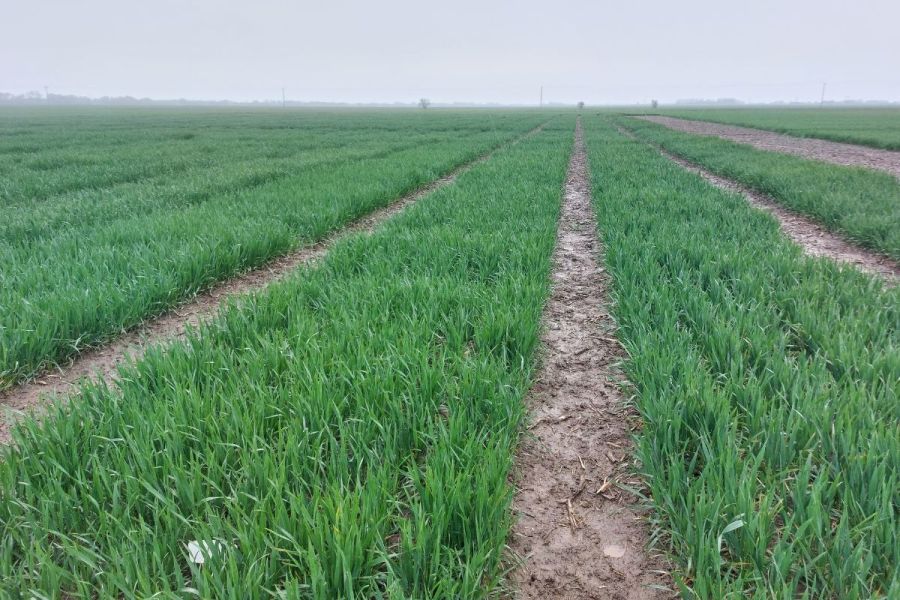Ahead of a seventh season of Real Results, CPM looks back at how the circle of growers was formed and how the on-farm trials have provided insights to fungicide use, aiding decision-making in real-life scenarios.
“It’s not just real farms in real scenarios, it’s also real in terms of the analysis being robust.”
By Mike Abram
Back in 2016, it was a challenge by Staffordshire grower Clive Bailye to BASF’s claim that its SDHI fungicide programme would provide a £20/ha benefit over existing standards that provided the catalyst for the firm’s now long-running Real Results Circle.
Clive was deeply sceptical and decided to do his own on-farm trial to compare BASF’s Adexar (fluxapyroxad+ epoxiconazole) followed by Librax (fluxapyroxad+ metconazole) with a programme using Aviator (bixafen+ prothioconazole) and his own farm standard, carried out using three 4ha blocks in a 25ha field.
It was the demonstration of the effectiveness of larger-scale on-farm trials that appealed to BASF and provided the impetus for the launch of Real Results trials the following season, explains Steve Dennis, BASF’s head of business development.
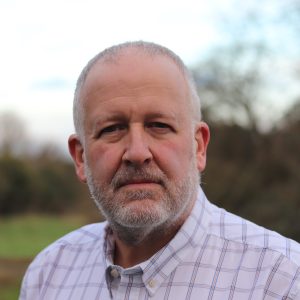
Using the ADAS Agronomics system made it possible to carry out farm-scale trials with growers without compromising the trial’s technical validity and statistical power, says Steve Dennis.
“Growers were feeling a little jaundiced about small plot trials,” he recalls. “They are, and remain, the gold standard of testing products, but using the ADAS Agronomics system we could start doing farm-scale trials with growers without compromising the trial’s technical validity and statistical power.
“It was the first time we had the opportunity for farmers to do technically valid comparisons on farm.”
The main criterion for growers joining the initiative was as simple as wanting to take part, says Steve. “We wanted people who had bought into the principle because there was going to be some inconvenience involved with changing applications, meeting BASF or ADAS staff, and providing the data. They needed to be innovative and open-minded.”
Access to yield monitoring was also important as it allowed ADAS to run the full power of its Agronomics data analysis on a trial. “Every data point is used to do the statistical analysis.”
That’s important as it brings technical validity to the trials, he stresses. “Doing these trials might seem like a half field comparison with something else, but it’s technically robust.”
Each field is selected by the grower with help from ADAS to minimise background variation using satellite imagery, and then monitored in season to give a view on disease development. Advice is given to mitigate tramline edge effects, while the full yield analysis gives statistical confidence.
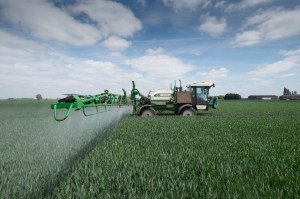
In Real Results on-farm trials, advice is given to mitigate tramline edge effects, while the full yield analysis gives statistical confidence.
“That’s part of the reason why the team Real Results was used. It’s not just real farms in real scenarios, it’s also real in terms of the analysis being robust.”
Around 50 farmers took part in those first Real Results trials in 2017 to compare the Adexar followed by Librax programme with their farm standard treatment. From 2019, it was BASF’s new Revystar (mefentrifluconazole+ fluxapyroxad) that took centre stage, initially under an experimental permit before its commercial launch in 2020.
In total, 82 farmers have conducted 224 yielded trials since 2017, with 131 of them trialling Revystar, says Alice Johnston, grower community manager for BASF.
“The main thrust of the programme is to help growers learn how to get the best from the technology rather than directly compare products in a ‘which fungicide’ series,” she says.
“That means there have been around 70 unique fungicide programmes employed by growers in 85 trials since 2020, so there is no large dataset comparing Revystar with another product.”
Discussion with the grower group has also helped formulate different objectives for the trials in each year.
“For example, in 2021 we challenged the Real Results Circle to maximise productivity in wheat by building on a Revystar programme. In one programme they applied the standard BASF two-spray programme of 0.75 l/ha of Revystar at T1, followed by 1 l/ha of Revystar at T2.
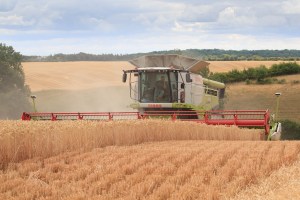
Yield monitoring allows ADAS to run the full power of its Agronomics data analysis on a trial so that every data point is used to do the statistical analysis.
“In the other treatment they took the same Revystar approach but were invited to add additional inputs they felt would increase yield – an Agronomy Max treatment. Some chose to increase nitrogen or use more trace elements, others added strobilurin or multi-site fungicides, used biostimulants or increased the rate of Revystar,” she explains.
That season appeared to be a low septoria pressure season around the spray application timings, resulting in lots of discussion about rates and use of fungicides, she recalls, but wet weather after T2 meant septoria quickly developed.
Of the 16 growers who engaged in the Agronomy Max trials, the average additional yield was just 0.1t/ha. “The optimum approach, however, was seen by the seven growers who used additional Revystar, with an average dose increase of 0.4 l/ha resulting in an average yield uplift of 0.25t/ha.
“Two of the three largest yield responses were achieved by growers who increased the Revystar rate.”
Last year, 11 group members investigated the best order to sequence innovative new chemistry, Revystar and Univoq (fenpicoxamid+ prothioconazole), comparing 0.75 l/ha of Revystar at T1 followed by 1.25 l/ha of Univoq at T2, with 1.0 l/ha of Univoq at T1 and 1.0 l/ha of Revystar at T2.
“In another protectant year, there was no difference in yield between the two approaches,” reports Alice. “Both programmes gave exactly the same average yield after Agronomics analysis of 12.3t/ha.
“That should give growers confidence that Revystar provides a comprehensive approach to disease control at either timing, regardless of disease pressure, and a flexible approach to managing workload on farm.”
This year’s trials are partly aimed at understanding how to manage disease pressure in early drilled crops. “A number of crops were drilled earlier than usual last autumn – up to three weeks in some cases,” says Alice. “Understanding the implications of early drilling for increased septoria risk and effective management using fungicides with curative ability, where required, will be a key consideration for spring 2023.”
Overall, the four years of Revystar trials have confirmed what growers using the product commercially have seen – its consistency, flexibility and reliability, says Steve.
“Growers are understanding the product and trusting it, now they can see the flexibility in use at both T1 and T2. It’s giving us the performance we were achieving from the previous generations of products used with a multi-site.
“It’s accepted that it’s the most curative product for septoria in the market,” he claims. “That gives growers a lot of flexibility in terms of timing.”
However, timing fungicides correctly can be challenging, he points out. “We did some research in 2021 with NIAB that showed it typically takes two weeks from the first flag leaf in a field to fully emerge to the last one.
“In that situation, when is the perfect time to spray? If you wait for all the flag leaves to emerge, the first ones will have been out for quite some time, which means you’d have to rely on some curative activity.
“But equally, if you go earlier, before all of your flag leaves are out, then you’ll require higher levels of performance on leaf two. That’s because you have to make sure you’re reducing possible infection of the flag leaf from lesions on leaf two, so the chances are you’ll need curative activity in that situation as well,” he explains.
“Growers tend to think early means protect and late means curative but actually, because you’re managing leaf layers, it doesn’t mean that. Revystar is enabling growers at T2 to have more flexibility around their T2 application timing, and the story is the same at T1 because you’ve still got a period for all your leaf threes to emerge,” he concludes.
The case for small plot trials
While on-farm trials are extremely useful for providing real world evidence and experience, there’s some research that remains easier and more practical to do using small plot trials, highlights Steve.
One example is work BASF has conducted looking at the interaction between nitrogen and fungicide use, which has become especially relevant given the higher prices of both inputs.
“I think most growers would assume that if you reduce your nitrogen dose, the need for a fungicide like Revystar would decrease as you would decrease biomass and there would be less disease to control.
“But in our trials in 2022, under low to moderate disease pressure that wasn’t the case. Our trials showed whatever dose of nitrogen you were putting on, you were getting the same return on investment from Revystar treatments – altering your nitrogen dose did not alter your requirement for Revystar.”
. “With nitrogen, the return drops as you use more nitrogen, so each kilo is worth less than the kilo before.
“But with Revystar, you’re actually getting a bigger return on investment proportionally as you increase the rate from 0.75 to 1.0 l/ha than you do going up to 0.75 l/ha. So anyone thinking of trimming their rate of Revystar from 1.0 l/ha to 0.75 l/ha, that’s the bit you’re actually getting the biggest return on investment from.
“Going above that rate, you still get additional return but the rate at which the return accelerates starts to flatten off,” he explains.
In contrast, extra nitrogen does start to drive disease pressure when conditions are conducive to septoria development. So in a high disease pressure season, you do need more fungicide as you apply more nitrogen, he adds.
“It’s a complex story and the sort of thing you can only find out from replicated small-plot trials, so this is clearly the sort of gold star research we need to continue to do alongside the Real Results research.”
Real decisions from two of the grower circle
On-farm trials are part of the fabric of Stody Estate in North Norfolk under farm manager Mike Wilton’s guidance. Whether it’s trialling different drills or trying to improve nitrogen use efficiency to the more typical fungicide and variety tests, there’s a desire to try new technologies or approaches, he explains.
“I like to keep in touch with new technology and have a look, if possible, before it becomes commercially available so I can make use of it in the most appropriate way when it’s launched.”
That was the case with Revystar, which he trialled as a member of the Real Results Circle. “When BASF first asked us to trial Revystar, I didn’t think they were using it at high enough rates, so we ran our own trial comparing 1.0 l/ha with 1.25 l/ha and it gave me the confidence to use it at the lower rate,” he says.
“While disease pressure was low, we didn’t see a significant uplift in yield. It wouldn’t stop me using robust rates when the disease pressure is higher, but I think it also started me thinking about loading actives, so you don’t expose one active majorly to a disease.”
He’s likely to use a combination of different actives in the coming season, he says, with rates and product choice dependent on the season rather than commodity or input prices.
“Fungicide programmes should be appropriate to what’s happening in the field, not world markets,” he explains. “You could argue in a low-price year, where a loss of yield could tip you from profit to loss, protecting your investment by the appropriate use of fungicides is more important than when prices are higher and the risk of loss is lower.”
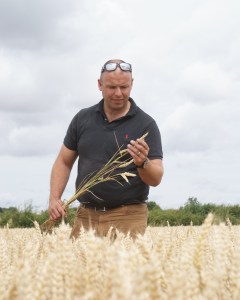
Having the trials on the farm is helpful to clear the fog between advertising, marketing and trials data, says Russ McKenzie.
He considers T1 to be the most important spray of the programme. “It’s very hard to save money at T1 because you have a short plant and more unsettled weather – ideal for disease development. If you can keep inoculum low at T1, then T2 has less to do and the opportunity to pare back and save money becomes easier.”
Current planning has either Revystar or Ascra (bixafen+ fluopyram+ prothioconazole) at T1, depending on variety, with Univoq (fenpicoxamid+ prothioconazole) as the likely choice at T2. All three have performed well in trials and commercially on farm, he says.
Being part of Real Results is about assessing whether the farm standard programme is passing muster as well as gathering information about BASF products and advice, says Russ McKenzie, who manages 140ha at Howson’s Lodge near Huntingdon, as well as providing consultancy advice.
“While we’ve sometimes seen yield slightly in favour of the Revystar programme, depending on variety profile, there’s usually not a huge amount between the two. It’s encouraging that what we’re doing on farm isn’t too far out.”
Having the trials on the farm is helpful to clear the fog between advertising, marketing and trials data, he adds. “It gives you confidence to pick the best or more appropriate product for your situation.”
The farm is trying to move away from more disease susceptible varieties, especially with lower septoria ratings. However, where those varieties – such as LG Skyscraper – are still grown, he’s found Revystar to be a good fit commercially at T1, while it makes more sense on cleaner varieties at T2, he suggests.
“It’s also a welcome addition on barley. While we haven’t seen much of a problem with ramularia, it does give an option for boosting control at the later timing.”
With grain prices currently on a downward trend and fertiliser pre-bought fertiliser at higher prices, the season is shaping up to be challenging, adds Russ. “Fungicide prices have gone up quite significantly, but you still have to look at it in terms of the yield response required to pay for a fungicide programme.
“It means we’ll have to look at different products in different situations based on the budget,” he concludes.
The Real Results Circle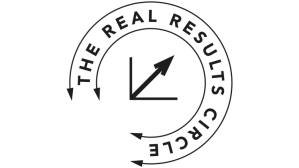
BASF’s Real Results Circle farmer-led trials are now in their sixth year. The initiative is focused on working with more than 50 farmers to conduct field-scale trials on their own farms using their own kit and management systems. The trials are all assessed using ADAS’ Agronomics tool which delivers statistical confidence to tramline, or field-wide treatment comparisons – an important part of Real Results.
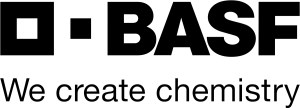
In a continuation of this series we follow the journey, thinking and results from farmers involved in the programme. The features also look at some other related topics, such as environmental stewardship and return on investment.
We want farmers to share their knowledge and conduct on-farm trials. By coming together to face challenges as one, we can find out what really works and shape the future of UK agriculture.
To keep in touch with the progress of these growers and the trials, go here.
This article was taken from the latest issue of CPM. For more articles like this, subscribe here.
Sign up for Crop Production Magazine’s FREE e-newsletter here.

